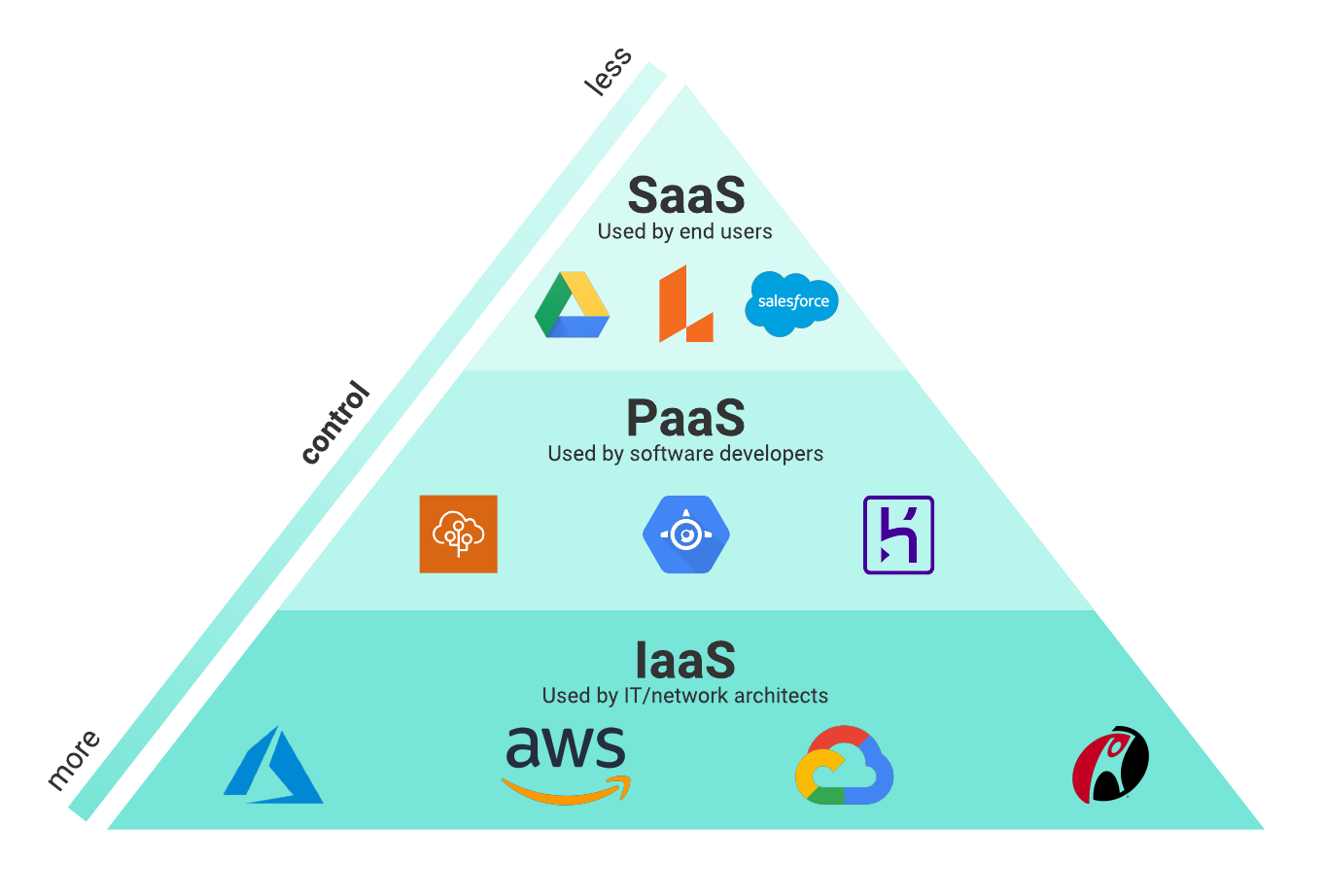Cloud solutions come in three primary service models: Infrastructure as a Service (IaaS), Platform as a Service (PaaS), and Software as a Service (SaaS).

IaaS
IaaS gives users access to storage, networking, servers, and other computing resources via the cloud. While the user is still responsible for managing their applications, data, middleware, etc., IaaS provides automated and scalable environments that provide a high degree of control and flexibility for the user.
For example, many businesses use IaaS to support workload spikes during busy seasons (like holidays).
Popular IaaS providers include:
- Amazon Web Services (AWS)
- Microsoft Azure
- Google Compute Engine (GCE), the IaaS component of Google Cloud Platform (GCP)
PaaS
This service layer is primarily geared towards developers and operations professionals. Service providers rent out cloud-based platforms for users to develop and deliver applications. In other words, PaaS provides a framework that makes it easier and more efficient to build, customize, and deploy applications.
SaaS
Cloud application services are the most well-known of the cloud service models. The software is hosted, packaged, and delivered by a third party through the Internet (typically on a browser-based interface). By delivering the software application over the Internet, enterprises can offload the costs of management and maintenance to the vendor(s).
Popular SaaS options include email and customer relationship management software.
Questions for readers :
(Give your answers in the comment section below)
Question 1. Why Cloud Computing was developed ?
Question 2. Define the terms web page, website, browser & URL ?
Question 3. List the advantages of Cloud Computing ?
Question 4. Compare Wi-Fi & internet ?
Question 5. List the differences between wired & wireless networks ?
There is no correct or wrong answers for these questions. So you can give your answers in the comment session below and we will give ours in the next post.
0 Comments:
Post a Comment